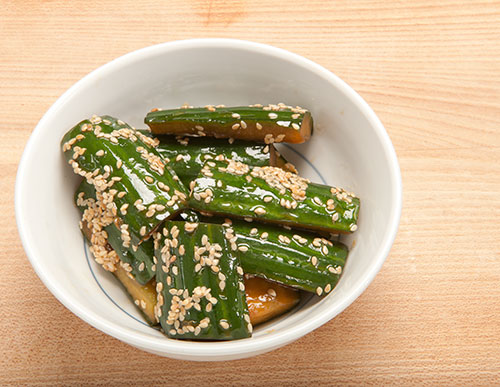
The weather has finally gotten warm around these parts after a very cold spring, and we're eating more summertime food now. This is one of our favorite salad-type dishes. The sesame dressing is very versatile, and you can use it for any manner of things, but here I've just used it with cucumber.
Tip: the longer you let it rest before serving, the saltier the cucumber will get, so if you want to serve it as a salad you'd want to combine the cucumber with the dressing just before serving. On the other hand, if you let it marinate in the refrigerator the cucumber becomes assertive enough to eat with plain rice as part of a Japanese meal.
Filed under:
japanese vegetarian summer vegan salad
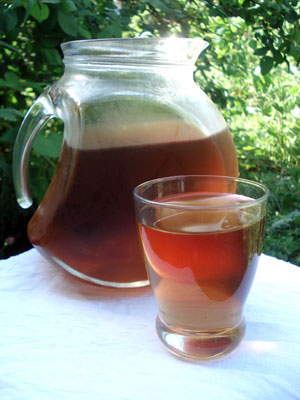
From the archives: We apparently had the coldest spring on record in this area. It's finally getting warm again, and today I started my first batch of mugicha this year. Here is a slightly updated article about mugicha, or toasted barley tea, my favorite non-alcoholic summer drink. This was originally published on May 10, 2007, and updated on June 10, 2008. I've added another update at the end.
When we were growing up, my mother frowned upon most sugary drinks for us kids. So things like sodas were generally not stocked in the house - an ice-filled cup of Coke was a great treat whenever we went out to eat. Things like Calpis, or when we lived in the U.S. Kool-Aid, were strictly rationed. The cool drink we always had in the refrigerator was mugicha, or barley tea. Even when we lived in White Plains, New York, there were always a couple of jugs of mugicha in the large American refrigerator.
Mugicha is traditionally made by briefly simmering roasted barley grains. It has a toasty taste, with slight bitter undertones, but much less so than tea made from tea leaves. To me, it's much more refreshing to drink than plain water.
My anti-sugar mother always made sugarless mugicha, but my younger self craved the sweetened mugicha that most of my friends' mothers seemed to make. I always begged my mother to make sweet mugicha, but she always refused. Some day, when I am the one making mugicha, I'll put all the sugar I want in it, I used to think. So, when I reached my teen years, and my mother was back working full time, I used to pour rivers of sugar into the mugicha. My little sisters loved it. I'm not sure if it made them more hyper than usual, though I have vague memories of my younger sister sitting on my head when she got bored.
Now that I am nominally an adult, I much prefer unsweetened mugicha. I'm growing more like my mother as I get older, a rather scary thought.
Filed under:
drink japanese lighter summer tea
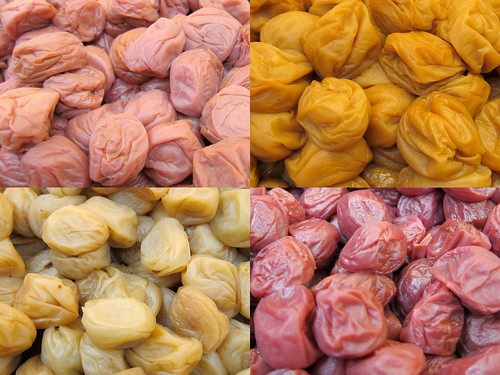
This month's Japan Times article is about umeboshi, the sour-salty pickled fruit (usually called a pickled plum, though it's actually more related to an apricot) that's practically a national symbol.
I've written quite a lot about umeboshi on these pages before of course, including how to make your own if you can get a hold of the fresh ume fruit, following my mother's instructions.
Filed under:
japanese preserves and pickles summer washoku writing elsewhere japan times
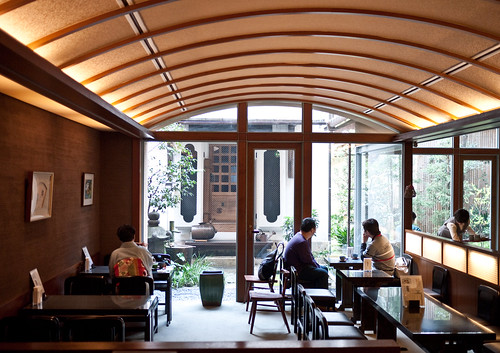
This month's Japan Times article is about Kyoto sweets.
Filed under:
dessert food travel summer tea kyoto writing elsewhere japan times
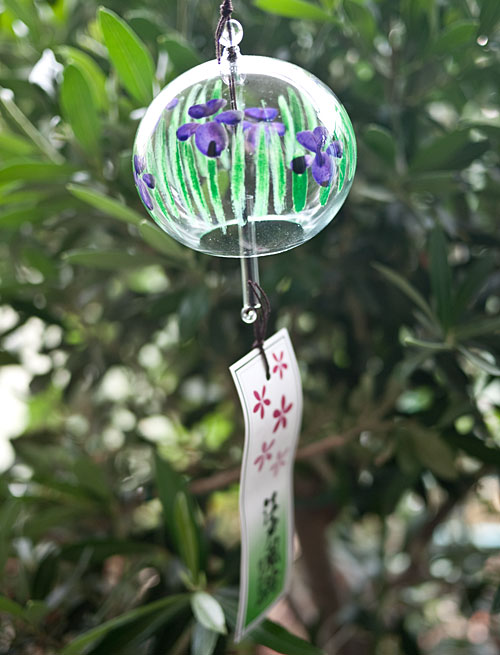
This month in the Japan Times, I talk about setsuden (cutting down on electricity consumption) and suzumi (keeping cool).
Filed under:
summer philosophy japan writing elsewhere japan times earthquake japanese culture energy saving
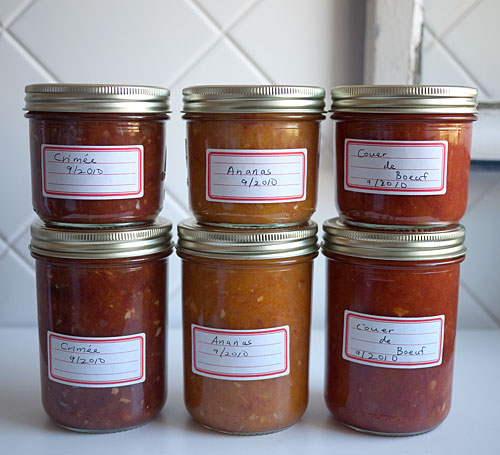
Minimalist tomato sauce, made from a single variety of heirloom tomatoes.
Filed under:
preserves and pickles vegetables summer low-carb

Ahh, tomatoes. What temperature is right for them?
Filed under:
japanese vegetarian provence summer france vegan salad low-carb
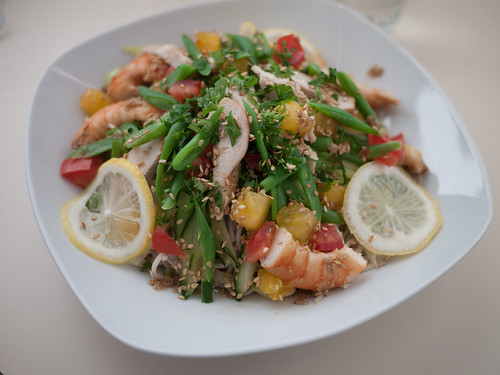
There's a new recipe from me, on another site - take a look! And a bit about the, uh, photo shoot...
Filed under:
japanese site news summer noodles salad soba in the media writing elsewhere japan times
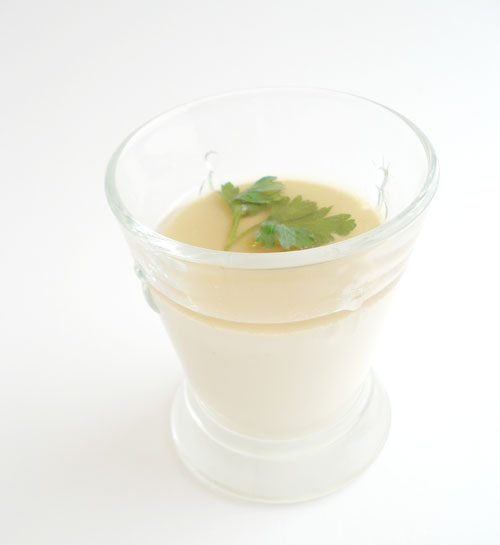
(From the archives - something cool and easy, perfect for the summer. Originally published in July 2008.)
Previously, I explained how some dishes that are not tofu are called -tofu, because of the shape, texture or both. This is the case with tamago dofu, a smooth savory egg custard that's served cold.
You can make it in a square mold, to make it look tofu-like. But I prefer to keep it a lot simpler by cooking the tamago dofu in the serving container it will be served in. This can be anything as long as it's heat-proof. Here I have used some sturdy glass cups made of pressed glass, but I've also used little pudding molds, tiny glass bowls made for holding ingredients while you're cooking, and even coffee cups.
There are very few ingredients in a tamago dofu: dashi or soup stock, eggs, and a few flavorings. Because of this, each component should be of top quality, because you'll taste each one quite clearly. Traditionally the soup component is dashi, but I don't really like the fish flavor of dashi when it's cold. So I prefer to make a simple vegetable stock instead.
Tamago dofu should be served ice cold. It's a great appetizer for a summer meal, or an interesting and soothing snack. I have been guilty of making 4 cups and 'hiding' them so I can eat them all by myself.
Filed under:
eggs japanese party food summer

I have not doing a lot of serious cooking lately, at least not the kind that results in a useful blog post. Most of my cooking energies have been expended on another project, which is wearing me down a bit (more on that at a later time). What I have been cooking for actual meals is very simple food, that requires minimal kitchen time, though not necessarily quick to cook.
The subject of this article is zucchini (courgette) slices that are slowly braised in a fragrant oil. It requires perhaps 10 minutes of actual kitchen time, but an hour or more to complete. Days even, if you choose one option. You don't need to hover over the pan for that time, but you do have to be nearby, to keep an eye on the hot oil, not to mention any errant pets, children or clumsy adults that wander in.
The wait and vigilance are worth it though. The zucchini slices, scented with the pine-mintiness of rosemary, become brown and sticky and almost caramelized on the surface, and soft and creamy on the inside. It's great as an accompaniment to roast or panfried meats or fish, or as part of a vegetarian meal (try it with pasta). I could have it every day, just on its own, if it weren't for the rather ruinous effect it has on my waistline, even if the oil is good-for-you olive oil.
This is the taste of late summer in Provence for me.
Filed under:
vegetarian provence summer vegan
Pages